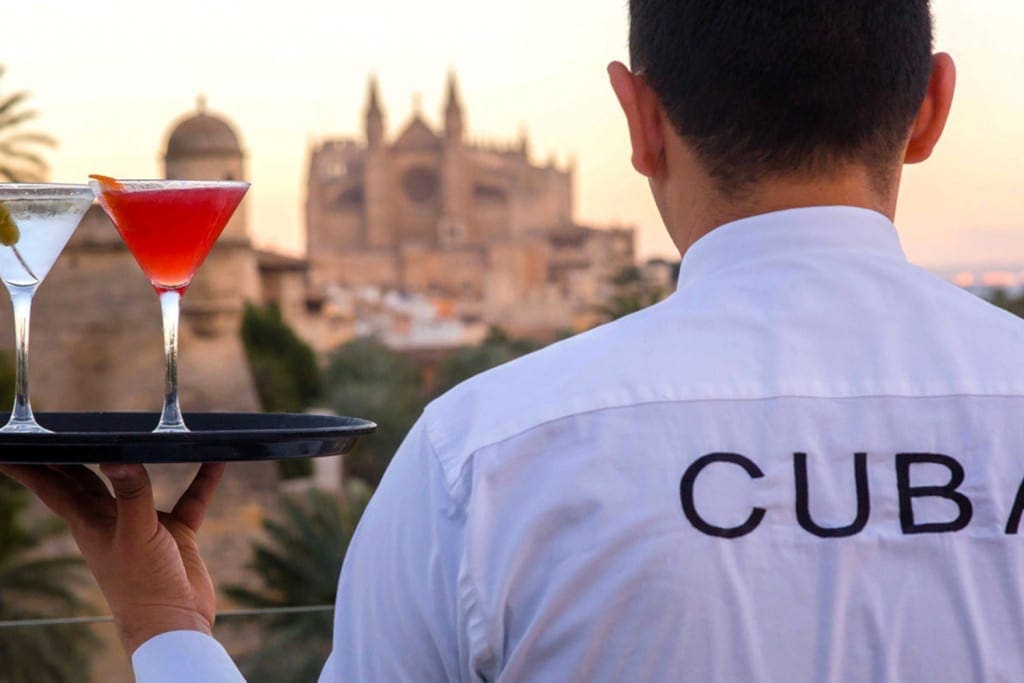Tranvia de Soller
Tranvia de Soller
Tranvia de Soller – updated 18 October 2022
The Tranvia de Soller (Tranvía de Sóller) is one of the most well-known tourist attractions in Mallorca. It is a tram nicknamed ‘red lightning’; which connects the beautiful town of Sóller with the Port de Sóller district. The tramway was built in 1913 and has been in continuous operation since then, making it one of the oldest tramways in the world.

Red Lightning
We’re not sure why the tram is referred to as ‘red lightning’, it is neither red, nor very fast. The trams are orange in colour with wooden framed windows, open-sided wagons and wooden benches. The tramline opened in 1913 and some of the railcars and carriages used today date back to this period of time.
Picturesque route
The Tranvia de Soller is known for its picturesque route, which passes through the heart of the scenic Serra de Tramuntana mountains. The tramway runs along a 12-kilometer track and offers stunning views of the surrounding countryside, including orange groves, olive groves, and the Bay of Soller.

Plaza de la Constitución
The journey from Sóller to the port takes around 15 minutes and passes through Plaza de la Constitución; which is the main square in Sóller and is a very popular meeting place for both locals and tourists. The tram passes cafes and bars with outside seating areas, and you are so close to the tables, it is possible to see what people are eating and drinking.
From the square, Tranvia de Soller passes by numerous orange groves and the old port facilities before reaching its destination.
History
The tramway is also famous for its historic rolling stock, which includes original tramcars from the early 20th century. The tramcars are equipped with wooden seats and overhead fans, giving passengers a glimpse into the past.
The history of the Tranvia de Soller is closely linked to that of the Tren de Sóller (the railway line that has connected Sóller with the island’s capital Palma de Mallorca since 1912 with the tramline opening in 1913 as an extension of the route.

Dual function
Initially, the rail cars served the dual function of transporting both people and goods. Freshly caught seafood was transported one way with coal and ammunition being transported in the other direction to resupply the former submarine and naval base at Port de Sóller.
One of the most unique features of the Tranvia de Soller is its hybrid power system, which allows the tramway to operate both on electricity and on diesel fuel. This system was introduced in the 1980s and allows the tramway to operate even when there is a power outage.
Tourist attraction
In addition to its scenic route and historic rolling stock, the Tranvia de Soller is also popular for its cultural significance. It is a symbol of the town of Soller and its rich history, and it is also a popular tourist attraction, attracting visitors from all over the world.
The Tranvia de Soller is not just a mode of transportation, but it is also an experience. The scenic ride, the historic tramcars, and the unique hybrid power system all contribute to the overall experience of riding the Tranvia de Soller. Whether you are a history buff, a nature lover, or just looking for a unique and memorable experience, the Tranvia de Soller is definitely worth checking out.

Port de Sóller
Port de Sóller is a very pretty coastal village located in a large and protected horseshoe bay separated from the rest of Mallorca by the Tramuntana mountain range.
For further information about the tram, please visit the official website.
















